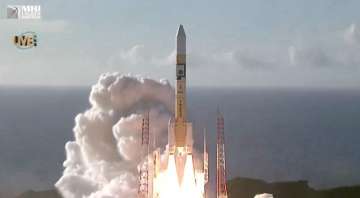UAE has launched its first mission to Mars on Sunday. It is an orbiter launched via Japanese rocket that will study the planet's weather. The H-2A rocket lifted off from the Tanegashima Space Center in Japan at 5:58 p.m. Eastern. Originally, the launch was scheduled for July 14 but delayed five days by poor weather at the launch site.
The rocket’s upper stage released Hope nearly an hour after liftoff. The spacecraft contracted controllers shortly after separation.
Hope is a 1,350-kilogram satellite developed by the Mohammed bin Rashid Space Centre (MBRSC) in the UAE. The spacecraft will arrive at Mars in February 2021 and go into an initial elliptical orbit between 1,000 and 49,380 kilometers above the planet. It will later move into its desired orbit for science observations, with altitudes ranging from 20,000 to 43,000 kilometers.
Hope carries three instruments: a camera, infrared spectrometer and ultraviolet spectrometer. The spacecraft will provide data on the Martian atmosphere, including monitoring weather and climate to a greater degree than past Mars orbiter missions by the United States and other nations.
Meanwhile, NASA is also supporting the mission by provind Hope access to the Deep Space Network from communicATIONS. NASA Administrator Jim Bridenstine told Spacenews.com: “All of us at NASA are excited about the prospects for ambitious future partnerships with the UAE in low Earth orbit and, via the Artemis program, on and around the moon with the ultimate destination of Mars.”
China is expected to launch its Tianwen-1 Mars mission, which features an orbiter, lander and rover, on a Long March 5 July 23. NASA will launch its Mars 2020 mission, carrying the rover Perseverance, on July 30 on an Atlas 5 from Cape Canaveral, Florida.
